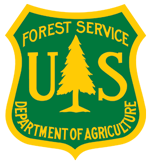-
'Climate Hubs' Will Provide Regional Networks on Climate Science, Forecasting Impacts as Part of President's Climate Action Plan
-
Agriculture Secretary Tom Vilsack announced today the creation of the first ever Regional Hubs for Risk Adaptation and Mitigation to Climate Change at seven locations around the country. "Climate Hubs" will address increasing risks such as fires, invasive pests, devastating floods, and crippling droughts on a regional basis, aiming to translate science and research into information to farmers, ranchers, and forest landowners on ways to adapt and adjust their resource management.
Located in
News & Events
-
 Agenda - March 11, 2015 Workshop
Agenda - March 11, 2015 Workshop
-
Urban Woodlands Conservation and Management Workshop. Organized and facilitated by the National Park Service to identify and create opportunities for greater collaboration among urban woodland researchers and managers working to restore and manage urban woodland ecosystems.
To view the goals and objectives of the workshop, please open the workshop agenda.
Located in
Cultural Resources
/
Urban Conservation
/
Urban Woodlands Conservation and Restoration
-
 Biodiversity management in the face of climate change: A review of 22 years of recommendations
Biodiversity management in the face of climate change: A review of 22 years of recommendations
-
Climate change creates new challenges for biodiversity conservation. Species ranges and ecological dynamics are already responding to recent climate shifts, and current reserves will not continue to support all species they were designed to protect. These problems are exacerbated by other global changes. Scholarly articles recommending measures to adapt conservation to climate change have proliferated over the last 22 years. We systematically reviewed this literature to explore what potential solutions it has identified and what consensus and direction it provides to cope with climate change. Several consistent recommendations emerge for action at diverse spatial scales, requiring leadership by diverse actors. Broadly, adaptation requires improved regional institutional coordination, expanded spatial and temporal perspective, incorporation of climate change scenarios into all planning and action, and greater effort to address multiple threats and global change drivers simultaneously in ways that are responsive to and inclusive of human communities. However, in the case of many recommendations the how, by whom, and under what conditions they can be implemented is not specified. We synthesize recommendations with respect to three likely conservation pathways: regional planning; site-scale management; and modification of existing conservation plans. We identify major gaps, including the need for (1) more specific, operational examples of adaptation principles that are consistent with unavoidable uncertainty about the future; (2) a practical adaptation planning process to guide selection and integration of recommendations into existing policies and programs; and (3) greater integration of social science into an endeavor that, although dominated by ecology, increasingly recommends extension beyond reserves and into human-occupied landscapes.
Located in
Resources
/
Climate Science Documents
-
 Climate Change: Future Federal Adaptation Efforts Could Better Support Local Infrastructure Decision Makers
Climate Change: Future Federal Adaptation Efforts Could Better Support Local Infrastructure Decision Makers
-
The federal government invests billions of dollars annually in infrastructure, such as roads and bridges, facing increasing risks from climate change. Adaptation—defined as adjustments to natural or human systems in response to actual or expected climate change— can help manage these risks by making infrastructure more resilient. GAO was asked to examine issues related to infrastructure decision making and climate change. This report examines (1) the impacts of climate change on roads and bridges, wastewater systems, and NASA centers; (2) the extent to which climate change is incorporated into infrastructure planning; (3) factors that enabled some decision makers to implement adaptive measures; and (4) federal efforts to address local adaptation needs, as well as potential opportunities for improvement. GAO reviewed climate change assessments; analyzed relevant reports; interviewed stakeholders from professional associations and federal agencies; and visited infrastructure projects and interviewed local decision makers at seven sites where adaptive measures have been implemented.
Located in
Resources
/
General Resources Holdings
-
Climate Resilience: What to Expect, How to Prepare, and What You Can Learn from Others
-
Join us for a webcast on climate resilience – the capacity of an individual, community, or institution to dynamically and effectively respond to shifting climate impacts while continuing to function at an acceptable level.
Located in
News & Events
-
 Conifer regeneration following stand-replacing wildfire varies along an elevation gradient in a ponderosa pine forest, Oregon, USA
Conifer regeneration following stand-replacing wildfire varies along an elevation gradient in a ponderosa pine forest, Oregon, USA
-
Climate change is expected to increase disturbances such as stand-replacing wildfire in many ecosystems, which have the potential to drive rapid turnover in ecological communities. Ecosystem recovery, and therefore maintenance of critical structures and functions (resilience), is likely to vary across environmental gradients such as moisture availability, but has received little study. We examined conifer regeneration a decade following complete stand-replacing wildfire in dry coniferous forests spanning a 700 m elevation gradient where low elevation sites had relatively high moisture stress due to the combination of high temperature and low precipitation. Conifer regeneration varied strongly across the elevation gradient, with little tree regeneration at warm and dry low elevation sites. Logistic regression models predicted rapid increases in regeneration across the elevation gradient for both seedlings of all conifer species and ponderosa pine seedlings individually. This pattern was especially pronounced for well-established seedlings (P38 cm in height). Graminoids dominated lower elevation sites following wildfire, which may have added to moisture stress for seedlings due to competition for water. These results suggest moisture stress can be a critical factor limiting conifer regeneration following stand- replacing wildfire in dry coniferous forests, with predicted increases in temperature and drought in the coming century likely to increase the importance of moisture stress. Strongly moisture limited forested sites may fail to regenerate for extended periods after stand-replacing disturbance, suggesting these sites are high priorities for management intervention where maintaining forests is a priority.
Located in
Resources
/
Climate Science Documents
-
 Do small tributaries function as refuges from floods? A test in a salmonid-dominated mountainous river
Do small tributaries function as refuges from floods? A test in a salmonid-dominated mountainous river
-
Excerpts from the text: On 8–10 August 2003, a powerful typhoon hit Hokkaido Island, Japan, accompanied with heavy rain, which allowed us to investigate the potential role of tributaries as refuges from flooding. We had just completed annual population census in four small tributaries of a river system 1–2 days before the typhoon.... Overall, our results did not support the hypothesis that many large fishes immigrate to small tributaries during floods. ... Despite the lack of evidence of mass movement, our result suggested a few immigrants from the main stem (i.e., juvenile white-spotted charr, sculpin and a few relatively large Dolly Varden). Because more than 100 small tributaries exist in the Shiisorapuchi River (Koizumi 2011), only a few individuals escaping to each tributary should accumulate to a great number enough to re-colonise main stem habitats even if fishes in the main stem were extirpated. Multiple refuges at different spatial scales should increase resistance and ⁄ or resilience of fish populations (Sedell et al. 1990; Pearsons et al. 1992). Thus, the roles of tributaries as refuges would deserve further attention
Located in
Resources
/
Climate Science Documents
-
 Ecological Effects of Prescribed Fire Season: A Literature Review and Synthesis for Managers
Ecological Effects of Prescribed Fire Season: A Literature Review and Synthesis for Managers
-
Prescribed burning may be conducted at times of the year when fires were infrequent historically, leading to concerns about potential adverse effects on vegetation and wildlife. Historical and prescribed fire regimes for different regions in the continental United States were compared and literature on season of prescribed burning synthesized. In regions and vegetation types where considerable differences in fuel consumption exist among burning seasons, the effects of prescribed fire season appears, for many ecological variables, to be driven more by fire-intensity differences among seasons than by phenology or growth stage of organisms at the time of fire. Where fuel consumption differs little among burning seasons, the effect of phenology or growth stage of organisms is often more apparent, presumably because it is not overwhelmed by fire-intensity differences. Most species in ecosystems that evolved with fire appear to be resilient to one or few out-of-season prescribed burn(s). However, a variable fire regime including prescribed burns at different times of the year may alleviate the potential for undesired changes and maximize biodiversity.
Located in
Resources
/
Climate Science Documents
-
 Fact Sheet: Riparian Restoration Decision Support Tool
Fact Sheet: Riparian Restoration Decision Support Tool
-
An innovative web-based tool - funded by the Appalachian Landscape Conservation Cooperative (LCC) and developed by researchers from the U.S. Forest Service and
the University of Massachusetts - is allowing managers to rapidly identify high-priority riparian targets for restoration to make more resilient in preparation for changes in future climate. The Riparian Restoration Prioritization to Promote Climate Change Resilience (RPCCR) tool identifies vulnerable stream and riverbanks that lack tree cover and shade in coldwater stream habitats. By locating the best spots to plant trees in riparian zones, resource managers can provide shade that limits the amount of solar radiation heating the water and reduces the impacts from climate change. This well-established management strategy will benefit high-elevation, cold-water aquatic communities.
Located in
Tools & Resources
/
Riparian Restoration Decision Support Tool
-
 Full Proposal - A Web-Based Tool for Riparian Restoration Prioritization to Promote Climate Change Resilience (RPCCR) in Eastern U.S. Streams
Full Proposal - A Web-Based Tool for Riparian Restoration Prioritization to Promote Climate Change Resilience (RPCCR) in Eastern U.S. Streams
-
The RPCCR is a web-based tool currently under development which is designed to allow managers to rapidly identify high-priority riparian restoration targets. The objective of this project is to complete development of the RPCCR, link it with the Appalachian LCC website, and integrate it with ongoing stream temperature monitoring and modeling efforts within the Northeast Climate Science Center (NECSC) and participating Landscape Conservation Cooperatives.
Located in
LP Members
/
…
/
Riparian Restoration Team
/
Background Project and Member Information























